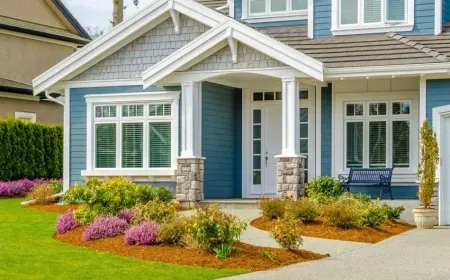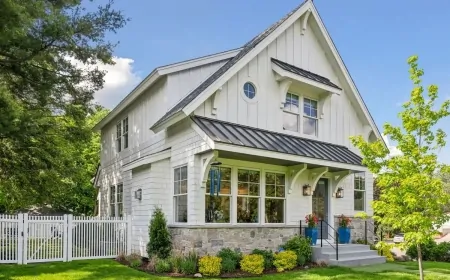US Housing Multifamily Construction Grows While Single-Family Homes Decline
US housing starts rose in June, driven by a jump in multifamily construction, while single-family home starts fell to an eight-month low

New home construction in the United States saw an uptick in June, largely fueled by a substantial increase in multifamily projects, according to data released on Wednesday. However, the single-family home market faced challenges, reaching its lowest level in eight months due to ongoing high interest rates.
Overall housing starts rose 3% to an annualized rate of 1.35 million units last month, primarily attributed to a remarkable 19.6% increase in multifamily construction. Conversely, single-family home starts have now declined for four consecutive months.
Building permits, which indicate future construction trends, also experienced growth, climbing 3.4% to an annual rate of 1.45 million. This increase was mainly driven by a rise in applications for multifamily projects. However, permits for single-family homes dropped by 2.3%, reflecting the slowest rate in over a year.
The robust pace of single-family construction observed at the end of last year is beginning to wane. The report highlighted that the number of homes currently under construction has fallen to its lowest point since early 2022, suggesting builders are aligning their inventory with current market demand.
Prior to this report, the Federal Reserve Bank of Atlanta's GDPNow forecast anticipated a 2.8% annualized decline in residential investment for the second quarter.
Builder Confidence
Builder sentiment has also taken a hit. The latest index from the National Association of Home Builders (NAHB) and Wells Fargo indicates that builder confidence has reached its lowest level for the year.
The industry is hopeful that the Federal Reserve will soon reduce interest rates, particularly following a recent inflation report that showed signs of price increases slowing across the economy. Mortgage rates have remained around 7% for several months.
To stimulate sales, builders are lowering prices and offering incentives, such as helping to reduce mortgage rates for buyers. The NAHB report revealed that 31% of builders reported price cuts in July, an increase from 29% in June.
Additionally, the Commerce Department’s report noted a 10.1% increase in total housing completions, reaching the highest level since 2007, largely driven by multifamily projects.
The housing starts data can be volatile, with the government indicating a 90% confidence interval that the monthly change could range from a 7.5% decline to a 13.5% increase.
Regional Variations
The report also provided regional insights, showing significant differences in housing starts across the country. The Northeast experienced the largest rise in housing starts, led by multifamily projects, while the South saw a decline in single-family home construction but an overall increase due to multifamily units. The Midwest and West exhibited mixed results, reflecting broader national trends.
Impact on Homebuyers
For homebuyers, the increase in multifamily construction may offer more rental and condominium options in the near future. However, the drop in single-family home starts could limit choices for those looking to purchase a house, potentially keeping prices elevated in that segment. High mortgage rates complicate affordability, making it essential for buyers to consider various financing options and builder incentives.
Economic Implications
The housing market serves as a key indicator of economic health, and these mixed signals contribute to uncertainty about the overall economic outlook. The persistent high interest rates and inflation are dampening some of the optimism that was present earlier in the year. Economists and industry experts will continue to monitor upcoming reports to assess the housing market's trajectory and its broader economic implications.
Future Outlook
The direction of the housing market will hinge on several factors, including Federal Reserve policies, inflation trends, and overall economic conditions. A reduction in interest rates could potentially stimulate more activity in the single-family home market. Furthermore, ongoing advancements in construction technology and sustainable building practices may influence future housing trends, offering more options and possibly reducing costs.
In summary, while the rise in multifamily housing starts is a positive development, the decline in single-family home construction underscores the challenges facing the housing market. High interest rates and economic uncertainties continue to exert pressure on both builders and buyers. As the market evolves, staying informed about these trends will be vital for anyone involved in real estate, from industry professionals to potential homebuyers.
Also Read: Homebuilder Confidence Reaches New Low Due to Persistent High Mortgage Rates
































































